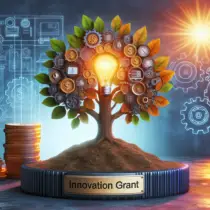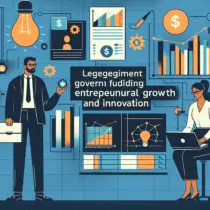In the rapidly evolving world of business, staying ahead of the curve requires constant innovation and adaptation. One of the most effective ways to fuel a company’s growth and development is by leveraging innovation grant opportunities. These grants can provide crucial funding and resources, enabling businesses to explore new ideas, develop cutting-edge technologies, and remain competitive in their respective markets.
What Are Innovation Grants?
Innovation grants are financial awards typically provided by governments, non-profit organizations, or private entities to support the research and development of new products, services, or processes. These grants are designed to encourage innovation and entrepreneurship, ultimately leading to economic growth and job creation.
Types of Innovation Grants:
- Government Grants: These are offered at local, state, or federal levels and aim to stimulate economic development.
- Private Grants: Awarded by corporations or private foundations that support innovation within specific industries.
- Non-Profit Grants: Provided by non-profit organizations focused on societal challenges, such as environmental sustainability or public health.
The Benefits of Innovation Grants
Innovation grants offer several benefits to businesses:
- Financial Support: Grants provide the capital needed to fund R&D projects without sacrificing equity.
- Reduced Risk: By covering some or all of the development costs, grants alleviate the financial pressure on companies.
- Encouraging Innovation: Grants create an environment where businesses feel empowered to experiment and create without immediate financial constraints.
- Market Advantage: Access to grant funding enables businesses to develop unique products, giving them a competitive edge.
How to Find Innovation Grant Opportunities
Finding the right grant can make a significant difference to a business’s ability to innovate. Here are some ways to find suitable grant opportunities:
Research Online Databases:
Numerous online databases provide information about available grants. Websites such as Grants.gov, the National Institute of Standards and Technology (NIST), and SBIR.gov offer extensive lists of grant opportunities tailored to specific industries.
Government Websites:
Government agencies are excellent sources for innovation grants. Agencies like the National Science Foundation (NSF) and the Small Business Administration (SBA) offer funding for various innovative projects.
Industry Associations:
Industry-specific associations often have information about grants that are particularly relevant to their members. Networking within these circles can also uncover exclusive opportunities.
Academic Institutions:
Universities and research institutions frequently partner with businesses on grant-funded projects. Collaboration with academic experts can enhance the credibility of grant applications.
Application Tips
Rigorous Planning:
Before applying, it’s crucial to have a well-thought-out business plan. This includes a detailed description of the project, its goals, the required budget, and the potential impact.
Clear Objectives:
Grant applications should clearly articulate the project’s objectives, expected outcomes, and how they align with the grant provider’s goals.
Demonstrate Need:
Explain why the project is essential and how the grant will enable success.
Track Record:
Highlight past successes and qualifications to build credibility.
Comprehensive Budget:
Provide a detailed and realistic budget, justifying each expense.
Case Studies of Innovation Success
Case Study 1: CleanTech Innovations
CleanTech, a startup focusing on sustainable energy solutions, secured a $500,000 grant from the Department of Energy. The funding enabled them to develop a groundbreaking solar panel technology that increased energy efficiency by 20%. As a result, they attracted further investment and expanded their operations internationally.
Case Study 2: MedTech Innovations
MedTech Inc. received a $300,000 SBIR grant to develop a new medical device. The grant helped them complete the R&D phase, and they subsequently received FDA approval. Their innovative device is now used in hospitals worldwide, improving patient outcomes and generating substantial revenue.
Competitive Scholarships and Innovation
Innovation isn’t limited to businesses alone; individuals looking to enhance their skills and contribute to innovative advancements can also benefit from competitive scholarships. This intertwines with business innovation as a knowledgeable and skilled workforce is critical to driving growth.
Scholarships in Iceland
Icelandic universities offer numerous scholarships for international students aimed at fostering education and innovation. The List of Competitive Scholarships Available From Icelandic Universities for International Students can be found on university websites and education portals. These scholarships cover a range of subjects, from engineering to environmental sciences, and support study and research in Iceland, an innovation hub in renewable energy and technology.
Scholarships in the United Kingdom
In the United Kingdom, the $34,000 International Excellence Scholarship in the United Kingdom 2023 presents an excellent opportunity. This scholarship supports talented international students who wish to undertake postgraduate study in the UK, particularly in fields that encourage innovation and problem-solving (Learn more and apply here).
By taking advantage of these scholarships, individuals can gain the expertise needed to drive innovative projects within businesses, thereby enhancing organizational capability for securing innovation grants.
Conclusion
Innovation grants are invaluable tools for businesses striving to stay competitive and achieve sustainable growth. By understanding the types of available grants, researching opportunities, and applying effectively, companies can secure essential funding for their projects. Additionally, fostering a workforce knowledgeable in innovation through competitive scholarships can further increase a business’s potential.
In sum, leveraging innovation grants and educational opportunities like the International Excellence Scholarship in the United Kingdom can maximize a business’s ability to develop groundbreaking products and services, ensuring long-term success and market leadership.






